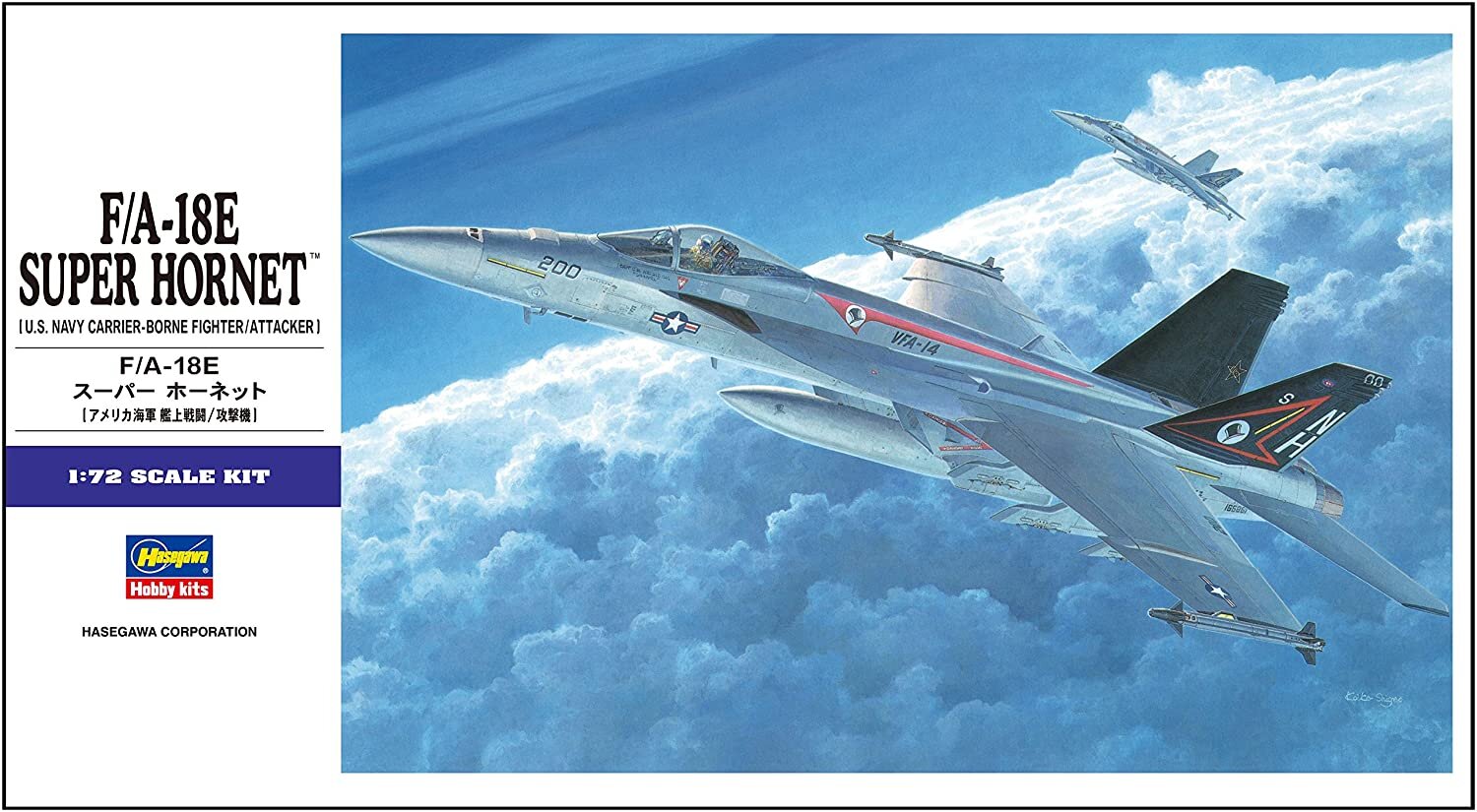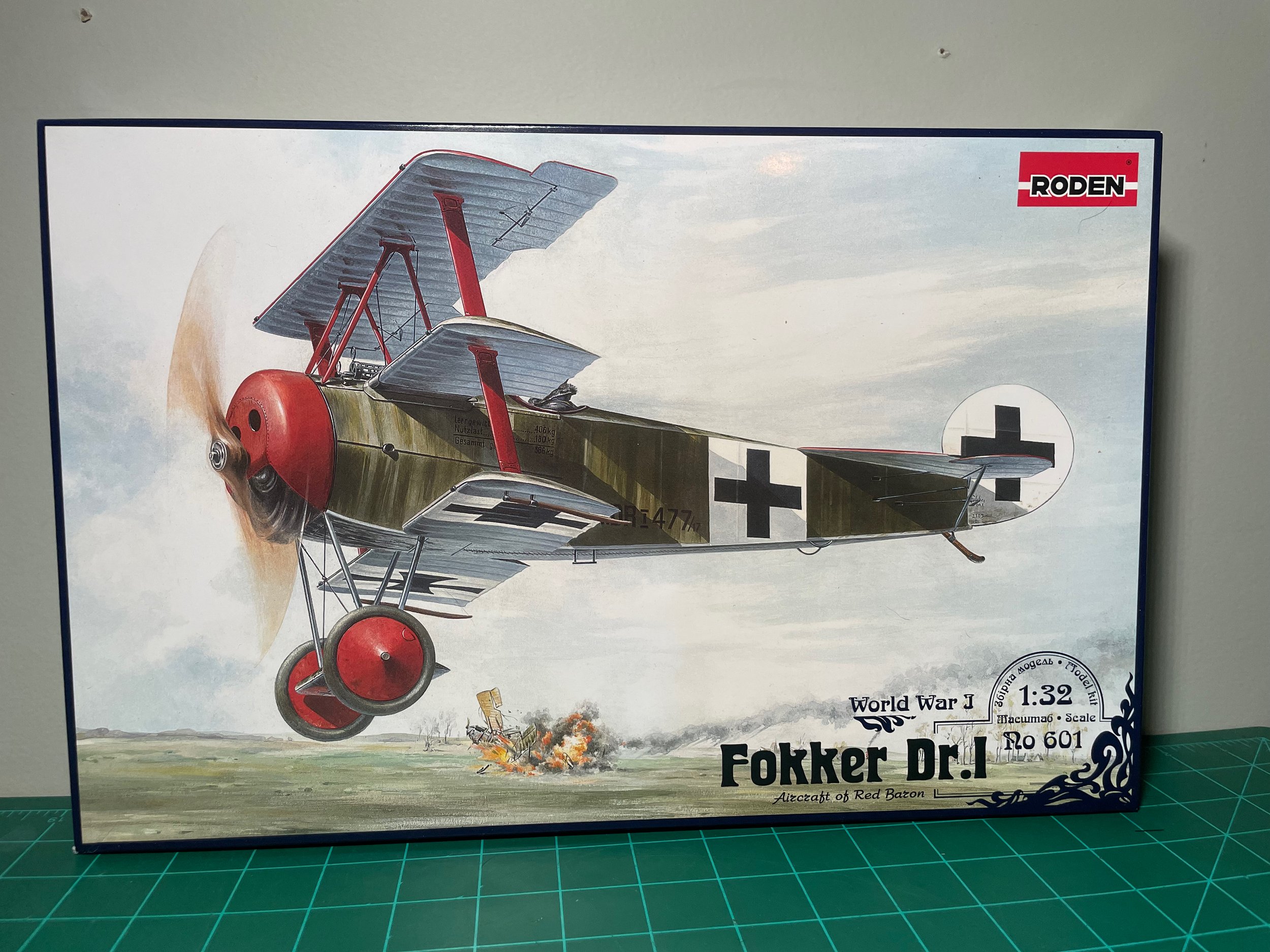
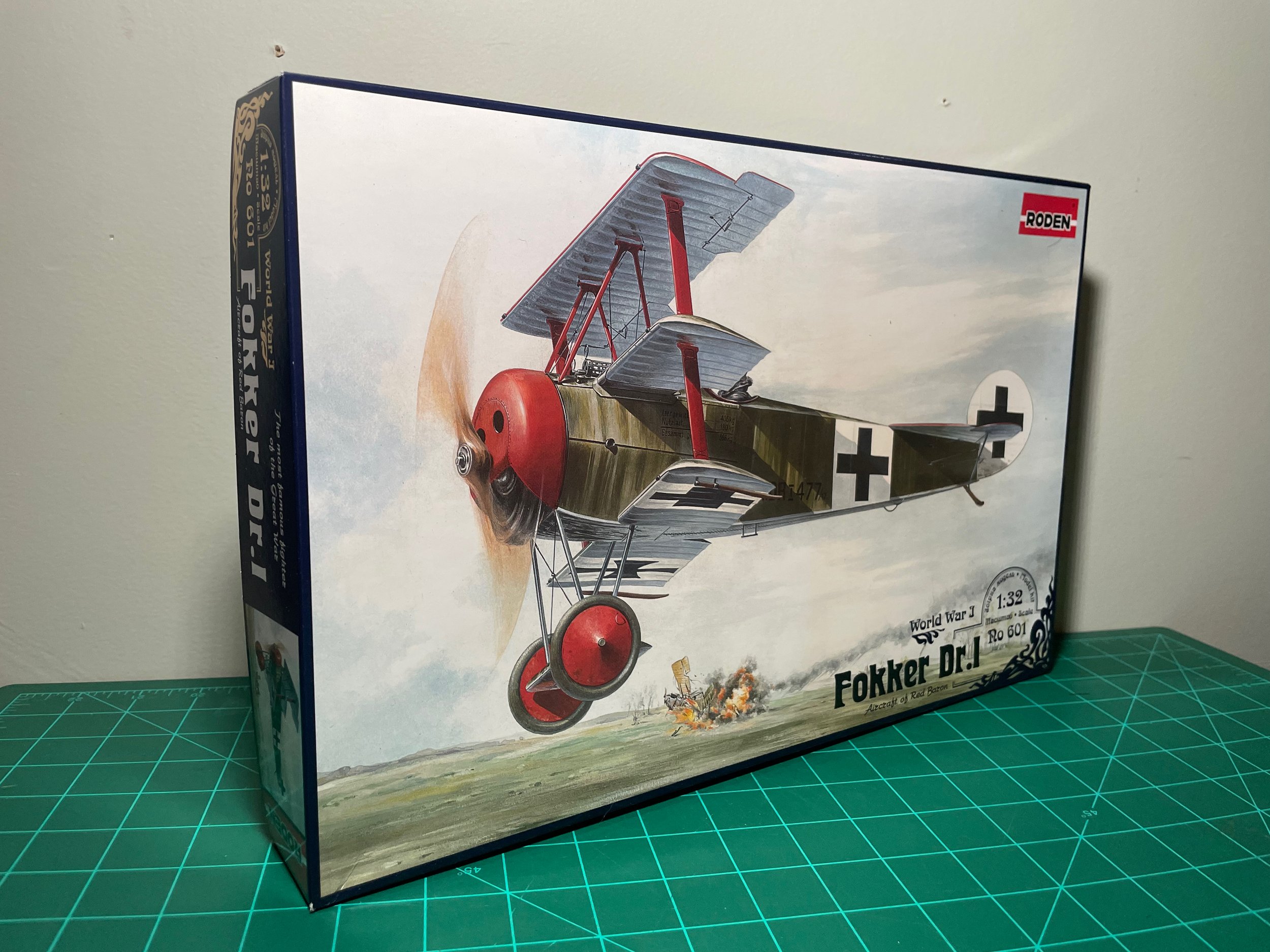
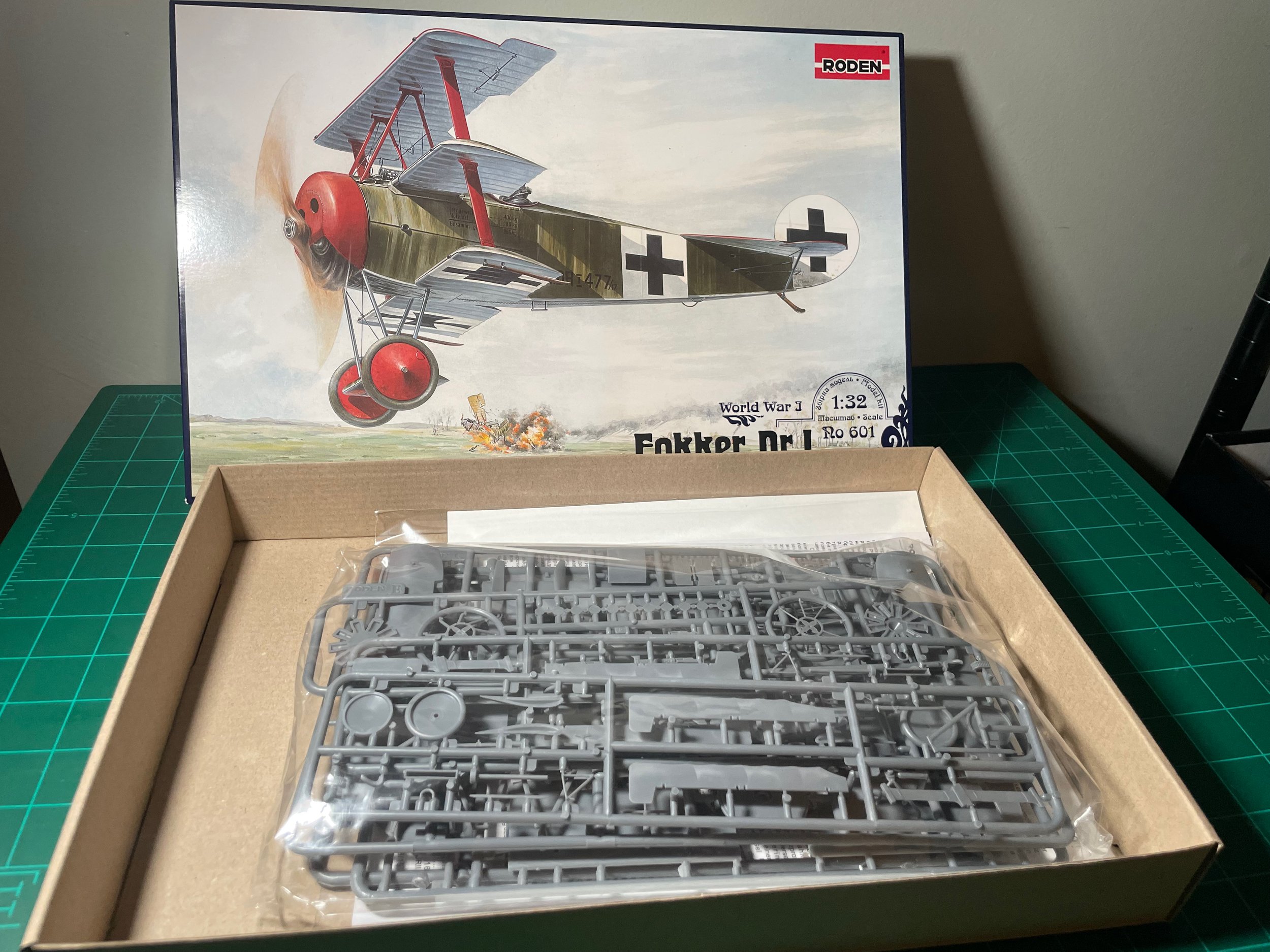
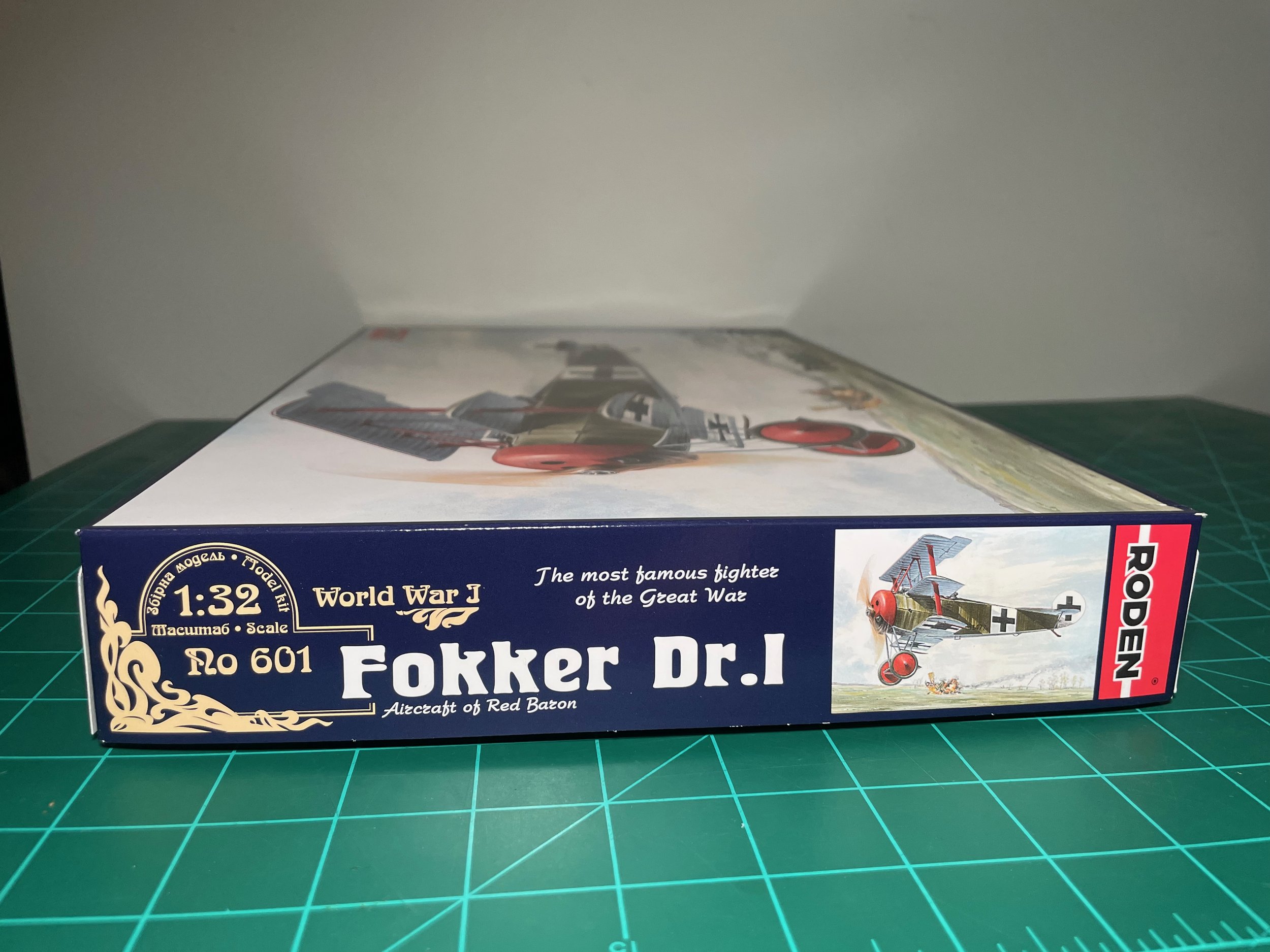



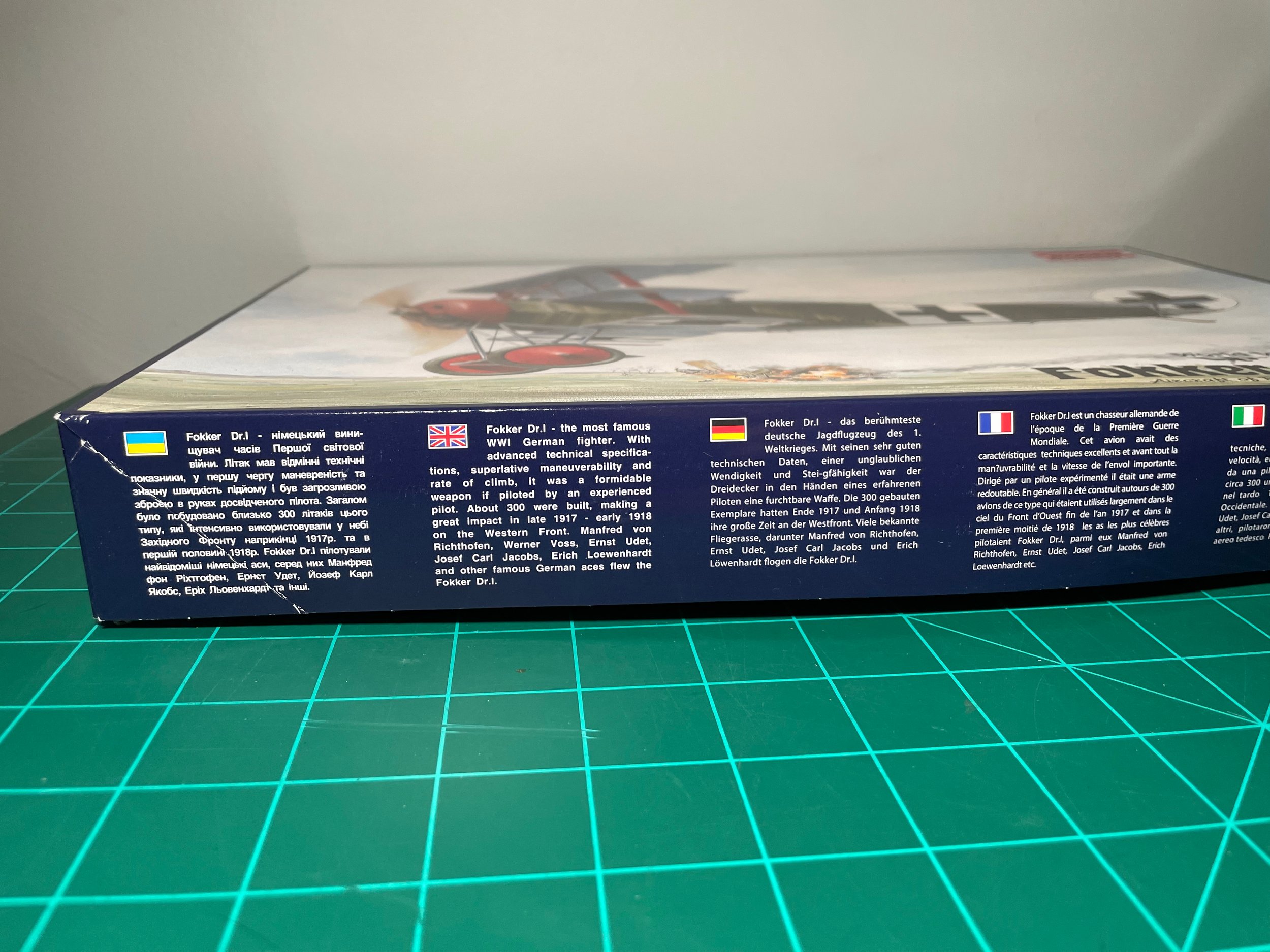
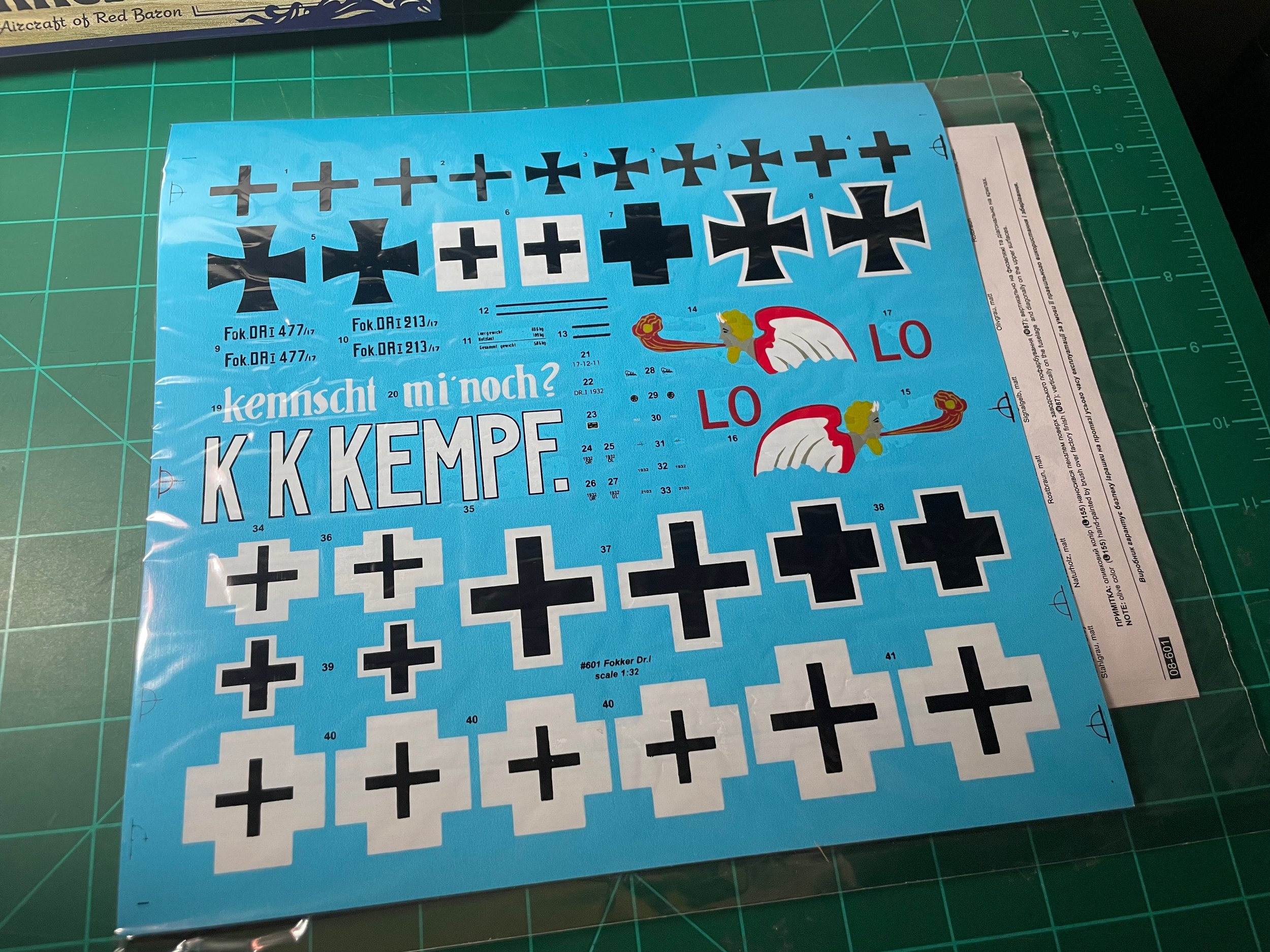
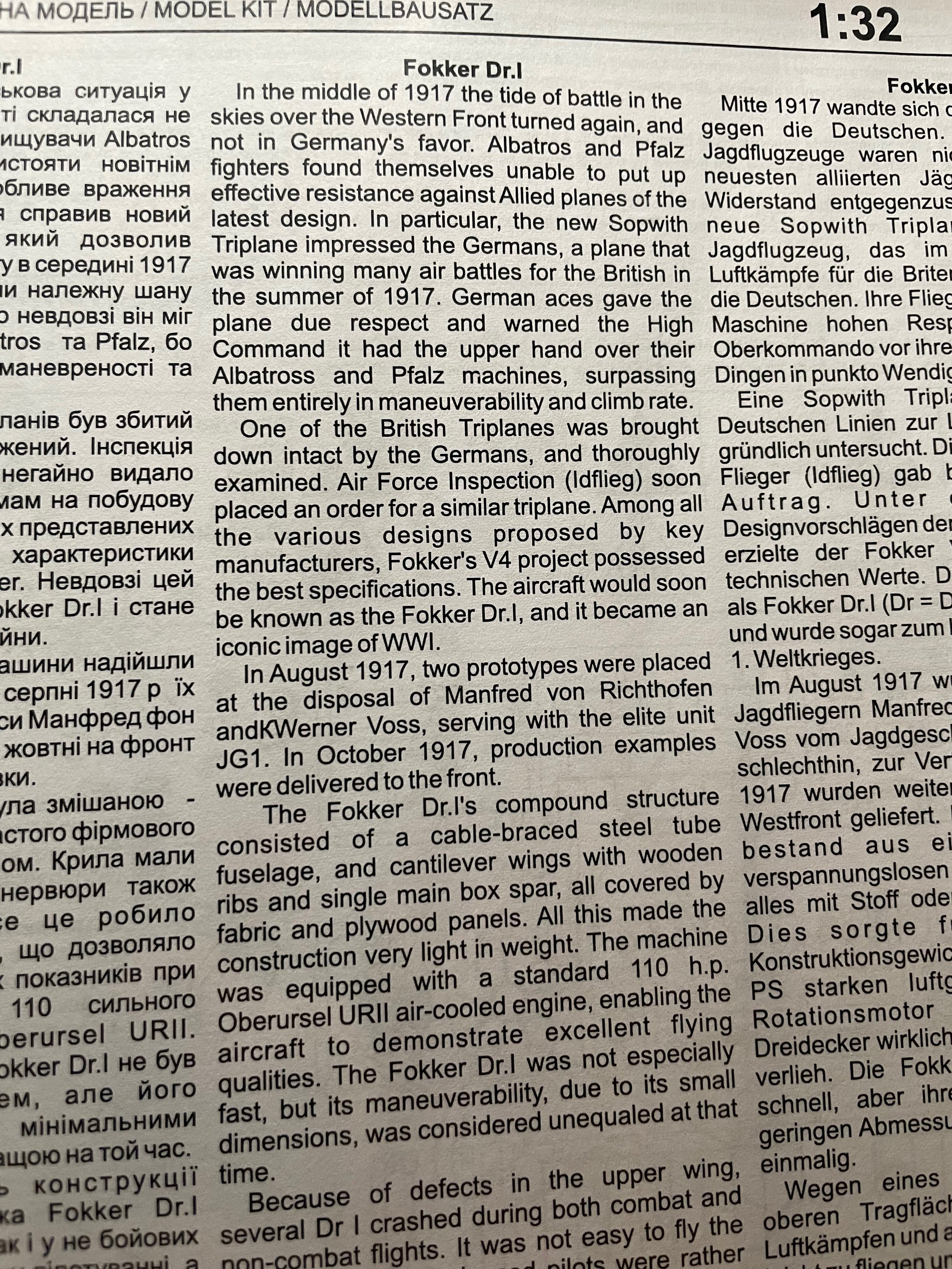
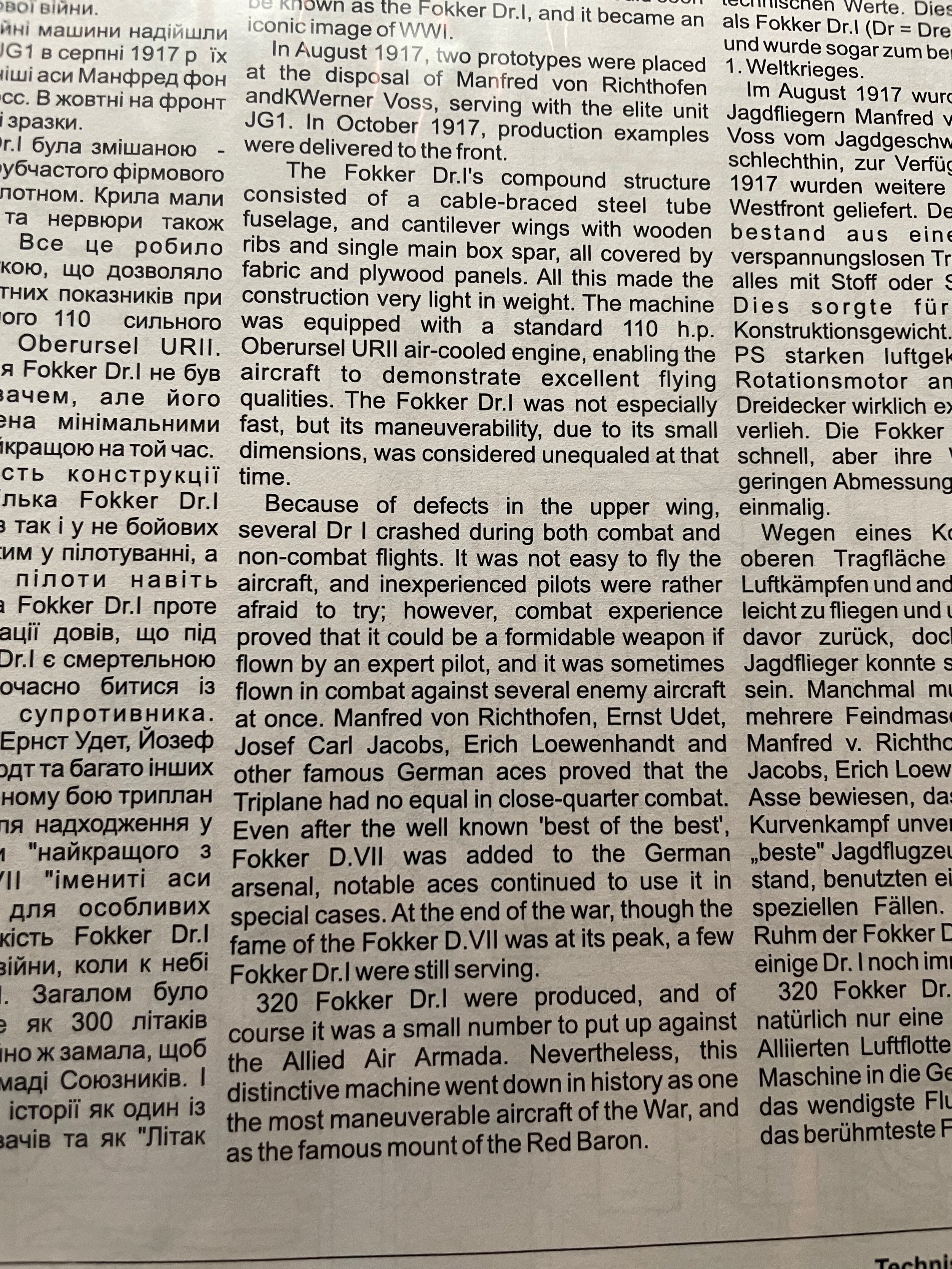
1/32 Roden Fokker Dr.I #601
GaelHobbies features the 1/32 Roden Fokker Dr.I #601.
This fantastic Fokker kit includes decals for:
Fokker Dr.I, 213/17, Jasta 2 , Ltn.Friedrich Kempf, March 1918.
Fokker Dr.I, 477/17, JG1 , Rittm.Manfred von Richthofen, March 1918.
Fokker Dr.I, 450/17, Jasta 7, Ltn.Josef Carl Jacobs, Summer 1918.
Fokker Dr.I, 586/17, Jasta 4, Ltn.Ernst Udet, June 1918.
In the middle of 1917, the tide of battle in the skies over the Western Front turned again, and not in Germany's favor. Albatros and Pfalz fighters found themselves unable to put up effective resistance against Allied planes of the latest design. In particular, the new Sopwith Triplane impressed the Germans, a plane that was winning many air battles for the British in the summer of 1917. German aces gave the plane due respect and warned the High Command it had the upper hand over their Albatross and Pfalz machines, surpassing them entirely in maneuverability and climb rate. One of the British Triplanes was brought down intact by the Germans, and thoroughly examined. Air Force Inspection (Idflieg) soon placed an order for a similar triplane. Among all the various designs proposed by key manufacturers, Fokker's V4 project possessed the best specifications. The aircraft would soon be known as the Fokker Dr.I, and it became an iconic image of WWI. In August 1917, two prototypes were placed at the disposal of Manfred von Richthofen and Werner Voss, serving with the elite unit JG1. In October 1917, production examples were delivered to the front. The Fokker Dr.I's compound structure consisted of a cable-braced steel tube fuselage, and cantilever wings with wooden ribs and single main box spar, all covered by fabric and plywood panels. All this made the construction very light in weight. The machine was equipped with a standard 110 h.p. Oberursel URII air-cooled engine, enabling the aircraft to demonstrate excellent flying qualities. The Fokker Dr.I was not especially fast, but its maneuverability, due to its small dimensions, was considered unequaled at that time. Because of defects in the upper wing, several Dr I crashed during both combat and non-combat flights. It was not easy to fly the aircraft, and inexperienced pilots were rather afraid to try; however, combat experience proved that it could be a formidable weapon if flown by an expert pilot, and it was sometimes flown in combat against several enemy aircraft at once. Manfred von Richthofen, Ernst Udet, Josef Carl Jacobs, Erich Loewenhandt and other famous German aces proved that the Triplane had no equal in close-quarter combat. Even after the well known 'best of the best', Fokker D.VII was added to the German arsenal, notable aces continued to use it in special cases. At the end of the war, though the fame of the Fokker D.VII was at its peak, a few Fokker Dr.I were still serving.320 Fokker Dr.I were produced, and of course it was a small number to put up against the Allied Air Armada. Nevertheless, this distinctive machine went down in history as one the most maneuverable aircraft of the War, and as the famous mount of the Red Baron.
GaelHobbies features the 1/32 Roden Fokker Dr.I #601.
This fantastic Fokker kit includes decals for:
Fokker Dr.I, 213/17, Jasta 2 , Ltn.Friedrich Kempf, March 1918.
Fokker Dr.I, 477/17, JG1 , Rittm.Manfred von Richthofen, March 1918.
Fokker Dr.I, 450/17, Jasta 7, Ltn.Josef Carl Jacobs, Summer 1918.
Fokker Dr.I, 586/17, Jasta 4, Ltn.Ernst Udet, June 1918.
In the middle of 1917, the tide of battle in the skies over the Western Front turned again, and not in Germany's favor. Albatros and Pfalz fighters found themselves unable to put up effective resistance against Allied planes of the latest design. In particular, the new Sopwith Triplane impressed the Germans, a plane that was winning many air battles for the British in the summer of 1917. German aces gave the plane due respect and warned the High Command it had the upper hand over their Albatross and Pfalz machines, surpassing them entirely in maneuverability and climb rate. One of the British Triplanes was brought down intact by the Germans, and thoroughly examined. Air Force Inspection (Idflieg) soon placed an order for a similar triplane. Among all the various designs proposed by key manufacturers, Fokker's V4 project possessed the best specifications. The aircraft would soon be known as the Fokker Dr.I, and it became an iconic image of WWI. In August 1917, two prototypes were placed at the disposal of Manfred von Richthofen and Werner Voss, serving with the elite unit JG1. In October 1917, production examples were delivered to the front. The Fokker Dr.I's compound structure consisted of a cable-braced steel tube fuselage, and cantilever wings with wooden ribs and single main box spar, all covered by fabric and plywood panels. All this made the construction very light in weight. The machine was equipped with a standard 110 h.p. Oberursel URII air-cooled engine, enabling the aircraft to demonstrate excellent flying qualities. The Fokker Dr.I was not especially fast, but its maneuverability, due to its small dimensions, was considered unequaled at that time. Because of defects in the upper wing, several Dr I crashed during both combat and non-combat flights. It was not easy to fly the aircraft, and inexperienced pilots were rather afraid to try; however, combat experience proved that it could be a formidable weapon if flown by an expert pilot, and it was sometimes flown in combat against several enemy aircraft at once. Manfred von Richthofen, Ernst Udet, Josef Carl Jacobs, Erich Loewenhandt and other famous German aces proved that the Triplane had no equal in close-quarter combat. Even after the well known 'best of the best', Fokker D.VII was added to the German arsenal, notable aces continued to use it in special cases. At the end of the war, though the fame of the Fokker D.VII was at its peak, a few Fokker Dr.I were still serving.320 Fokker Dr.I were produced, and of course it was a small number to put up against the Allied Air Armada. Nevertheless, this distinctive machine went down in history as one the most maneuverable aircraft of the War, and as the famous mount of the Red Baron.
















